Kansas City Royals: Five Moves for the Offseason

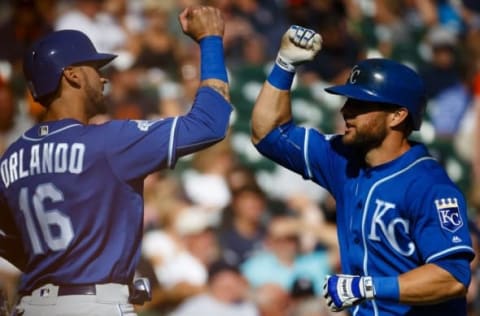
The 2016 season did not go as planned for the Kansas City Royals. As they look to contend once again in the upcoming season, they have quite a lot of work ahead of them.
The Kansas City Royals came into the 2016 season with high hopes, expecting to pick up right where they left off and contend for the World Series once again. Instead, injuries and ineffectiveness worked against them, as the Royals finished the season at exactly .500.
Some of the same problems from the past worked against them. Not known for their patience or power, the Royals ranked 13th with a .312 on base percentage and 14th with a .400 slugging percentage. Even with Kendrys Morales hitting 30 home runs, the Royals were last in the American League with 147 homers.
That lack of power would not have been such a problem had the Royals ability to make contact continued. Instead, they struck out 1224 times, which was 251 more strikeouts than in 2015. All the speed on the Royals did not matter since they could not get on base to cause havoc.
Those failures extended on the pitching side as well. Although the Royals could not hit home runs, they could certainly give them up, with seven pitchers allowing 10 or more homers. Six of those pitchers allowed twenty or more. Kansas City also issued 517 free passes, the tenth worst mark in the AL. They could not score, they could not hit for power, and they allowed the opposition to regularly use their rotation for batting practice. Obviously things need to change.
So what can the Kansas City Royals do to get back to the postseason? Here are a few moves that may help.
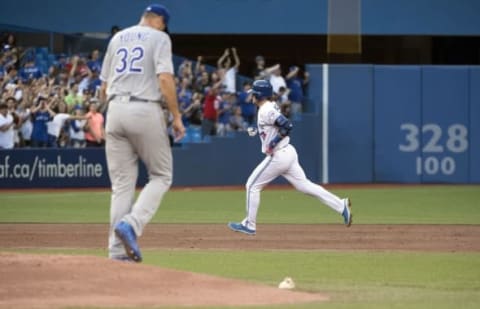
Change the philosophy of the pitching staff
Playing in cavernous Kauffman Stadium, it is understandable that the Kansas City Royals would favor fly ball pitchers. As their own lack of success with the long ball would indicate, it is quite difficult to hit the ball out of the K, and with their stellar defensive outfield, a fly ball pitcher should do quite well.
That mindset led to the Royals bringing back Chris Young on a two year contract, and signing Ian Kennedy to a five year deal with an opt out clause after two years. Edinson Volquez, who signed as a free agent prior to 2015, was also a fly ball pitcher. And last year, those tendencies led to the Royals giving up over 200 homers despite playing in such a large ballpark.
This season, power numbers were up throughout the game. That proclivity to bring in fly ball pitchers came back to bite the Royals, as they were unable to keep their opponents in the yard. The game may be changing back to a more power laden version, rendering the Royals previous advantage with their flyball pitchers obsolete.
For all the credit the Royals have gotten for their power bullpen, they do not have nearly the same talent in the starting rotation. While it costs quite a bit to bring in that top of the rotation starter, changing their philosophy to a more ground ball oriented starter may work to their advantage. For as solid of a defensive outfield the Royals have, the infield is just as good. Those ground balls could help erase quite a few mistakes, whereas their flyball tendencies only magnify those problems.
This will not be a change that can happen overnight, but the Royals can start that process this offsesaon. Bid Young adieu, let Volquez depart in free agency, and find a a couple of pitchers capable of getting ground balls.
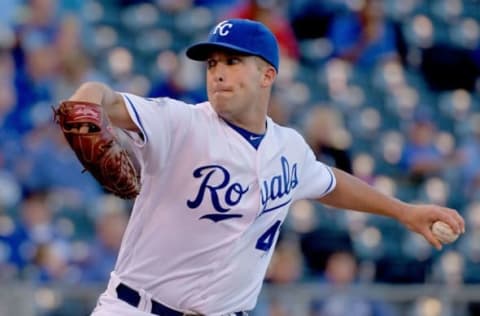
Extend Danny Duffy
Over the past couple of years, the Kansas City Royals have been waiting for Yordano Ventura to blossom into an ace. Instead, Ventura has struggled with his emotions and maturity. Meanwhile, Danny Duffy, who the Royals have shuffled between the rotation and the bullpen, appears set to take that step forward.
Prior to tiring down the stretch, Duffy had put together a campaign that would have ranked amongst the best in the American League. Through August 21, Duffy had an 11-1 record with a 2.66 ERA and a 1.010 WHiP, striking out 147 batters against 29 walks in 138.2 innings. That is, quite simply, the type of production a true ace would provide.
Although Duffy tired down the stretch, it was to be expected as he threw the most innings of his career. However, with a full offseason to get ready to be in the rotation, and the knowledge that he would be counted on to front the Royals pitching staff, those fatigue issues could be easily solved.
Coming off a season where he made $4.23 Million, this may be the best time to extend Duffy. He has one more year of arbitration left, and should Duffy follow up his 2016 campaign with a similar season, he could be outside of their price range. An extension would certainly carry risk, but of the possible options to step in as the staff ace, Duffy is the pitcher who is closest to taking on that role.
The Kansas City Royals have been waiting to develop a staff ace. As it turns out, they may have been looking in the wrong direction. Now, they need to lock in Danny Duffy before it is too late.
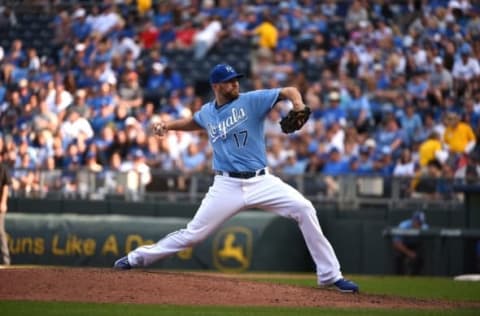
Trade Wade Davis
Relief pitching has been a hallmark of the Kansas City Royals success over the past few seasons. With their bullpen Cerberus in place, the Royals were able to shorten the game to six innings at most, handing the ball to their vaunted trio to shut down the opposition.
A key piece to that approach has been Wade Davis. Arguably the best reliever in baseball over the past three years, Davis has posted a 1.18 ERA and a 0.892 WHiP in 182.2 innings. He has proven to be a stellar setup man, and has become one of the top closers in the game. No one could doubt his value to the Royals.
And yet, if any team was in a position to shop a reliever like Davis, it may be Kansas City. Kelvin Herrera, who would be a lot cheaper on an extension, filled in admirably as the Royals closer when Davis was injured last year. It is certainly possible that, if given his chance, Herrera could be another dominant closer.
Given the returns for Aroldis Chapman and Andrew Miller at the trade deadline, the Royals would have to consider moving Davis this offseason. A free agent after 2017, having Davis available for an entire season would only increase his price tag. The Royals farm system, which is in need of some top end talent, could get quite the infusion of talent.
The Royals may have the perfect replacement for Davis with Herrera. Joakim Soria likely will not be as bad as he was in 2016 again. Matt Strahm looked like a solid piece for the bullpen, and could be ready to seize the seventh inning role. it is time to get something for a player that may be gone at the end of the season.
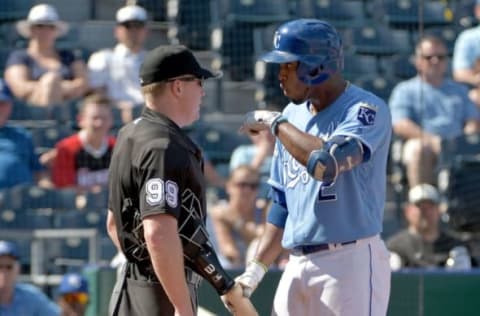
Find production in the middle infield
Second base has essentially been a black hole for the Kansas City Royals since the time of Frank White, and last season was no exception. Omar Infante was mercifully cut loose, but that did not solve the problem. Whit Merrifield, Raul Mondesi, and Christian Colon were all given the chance to take over the position, but none of them provided anything close to Major League caliber production.
Yet, for all the attention that second base gets when it comes to ineptitude, the Royals also have a problem at shortstop. Alcides Escobar may have been a good luck charm at leadoff for the Royals in 2015, but he has consistently been amongst the worst hitters at his position.
Last year, the Royals were 25th in baseball with a .642 OPS at short. That mark was entirely Escobar’s, as he played each game. Meanwhile, the Royals .611 OPS at second was next to last, surpassing only the production of the Oakland A’s. They need an upgrade at both positions, but that may be a difficult proposition.
Already, there are a few ideas peculating. Cheslor Cuthbert may have the first chance at second if he performs well during the Instructional League, where he is attempting to learn the position. Escobar, whose $6.5 Million option should be declined, could be replaced by Mondesi. If not, then a trade of a player like Davis could bring in a long term solution at either position, and even provide a bit of offense.
The middle of the infield has been solid defensively, but the Royals have not had solid production in either spot for quite some time. It is time to make a change and move on from players who could not hit their way out of a wet paper bag.
Get rid of the set designated hitter
For a team that changed the way baseball was played over the past few years, the Kansas City Royals still have the occasional old fashioned view. One of those involved having a player that was strictly the designated hitter, going from Billy Butler to Kendrys Morales.
More from Call to the Pen
- Philadelphia Phillies, ready for a stretch run, bomb St. Louis Cardinals
- Philadelphia Phillies: The 4 players on the franchise’s Mount Rushmore
- Boston Red Sox fans should be upset over Mookie Betts’ comment
- Analyzing the Boston Red Sox trade for Dave Henderson and Spike Owen
- 2023 MLB postseason likely to have a strange look without Yankees, Red Sox, Cardinals
While Morales certainly did his part last year, having that one player taking up a spot on the roster limits the Royals flexibility. Salvador Perez is in the lineup virtually every day because the Royals want his production and cannot use him to DH. Mike Moustakas, coming off of injury, may need the occasional partial day off. Other players could use the position as a way to stay out of the field for a day or two, while keeping their bats ready.
This would also allow for more depth to be at Ned Yost‘s disposal. Instead of having just the one utility infielder, who may not be able to cover every position, the Royals could have a legitimate backup everywhere, ready to be plugged into the lineup. No more seeing Moustakas at second base out of necessity.
Yes, it would hurt to lose the production that Morales provided, but the Royals are not the type of team that can afford to spend millions of dollars on a one dimensional player. Using that roster spot for added depth, and making that spot in the lineup a place where players can get a partial day off, would be a better allocation of resources.
Next: Marlins offseason to-do list
The Kansas City Royals have a lot of work to do this offseason. However, with the right moves, a return to the postseason could be forthcoming.